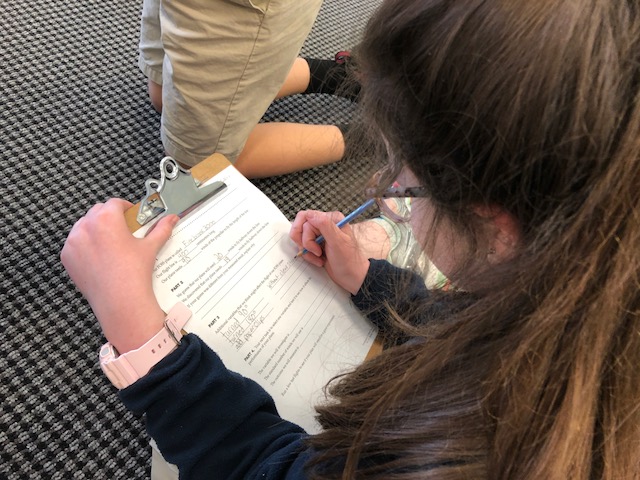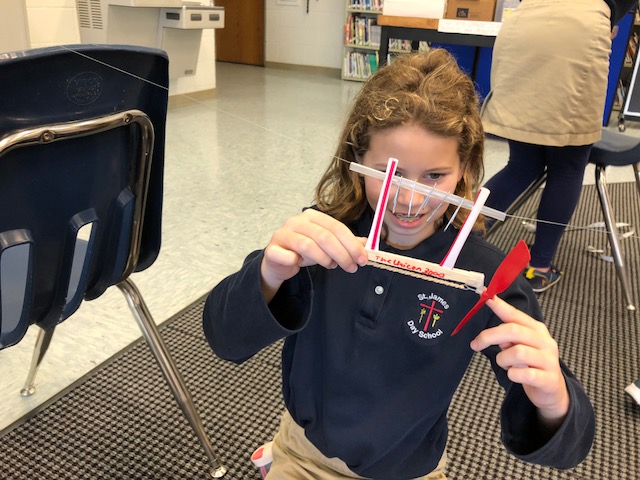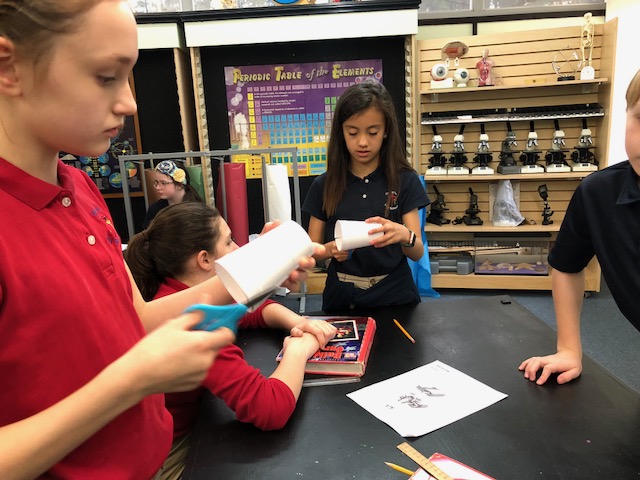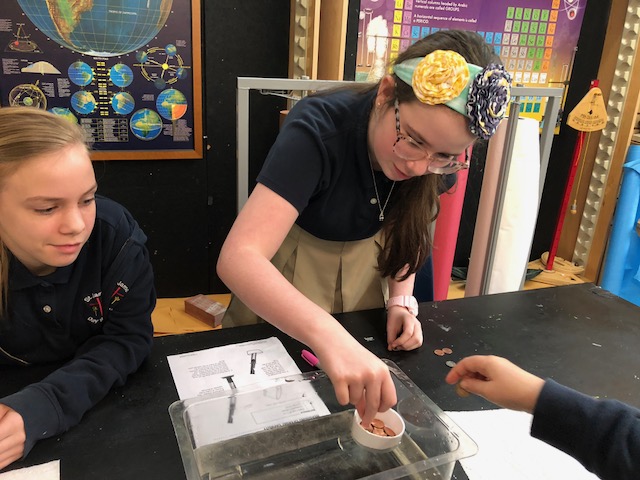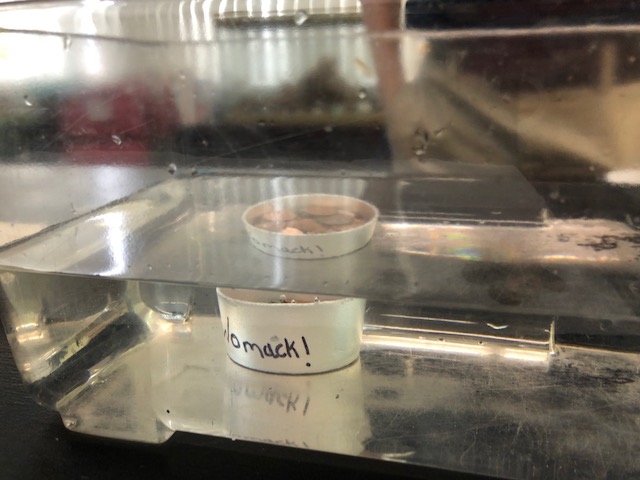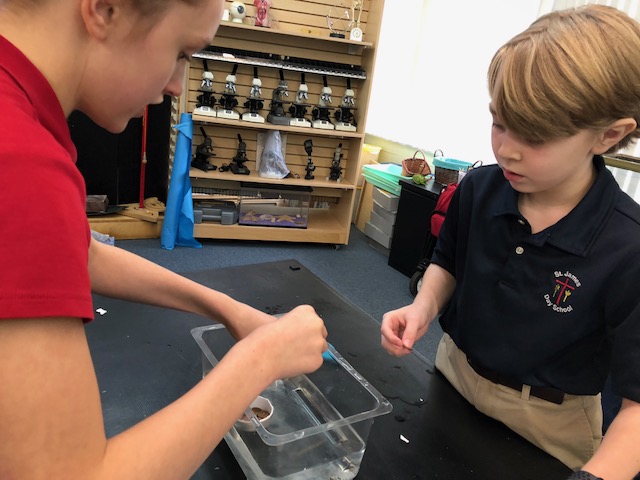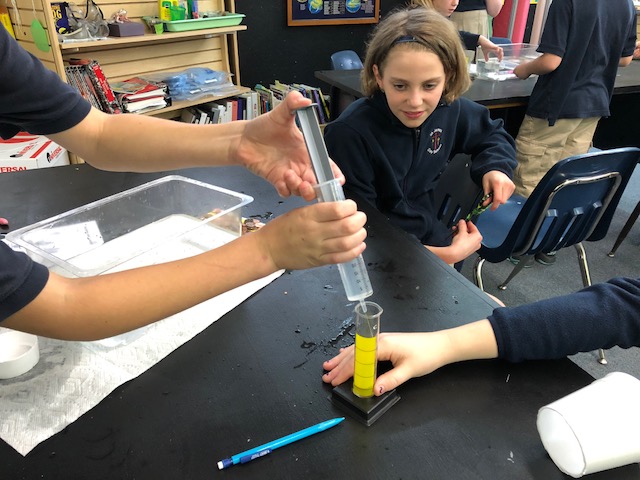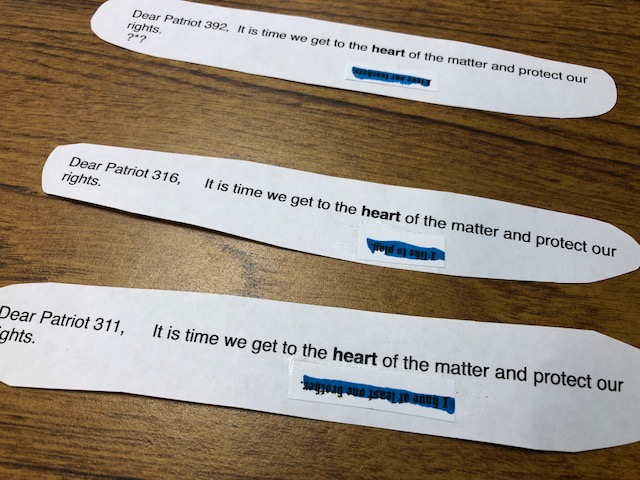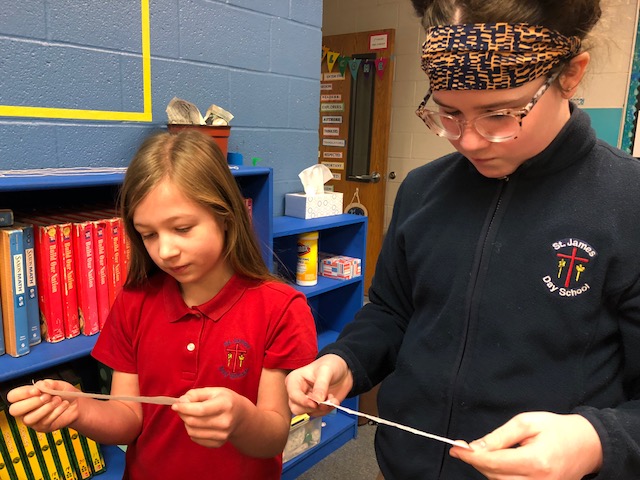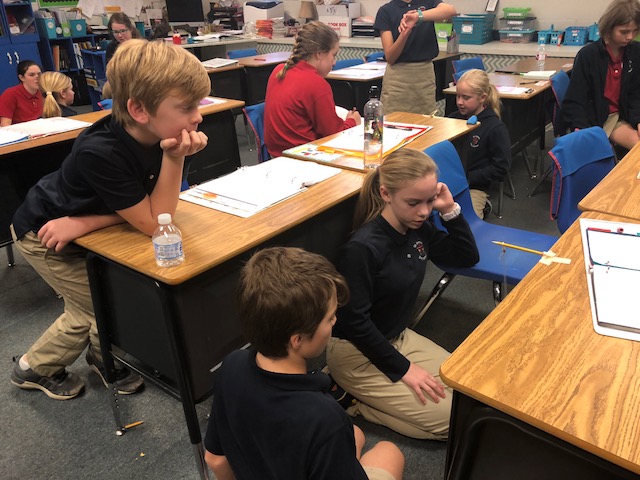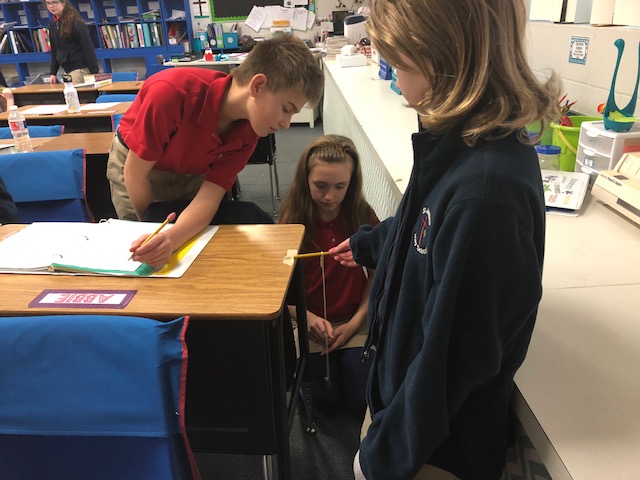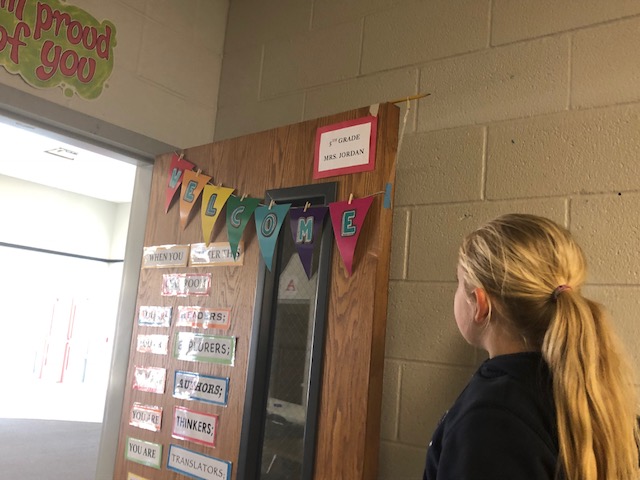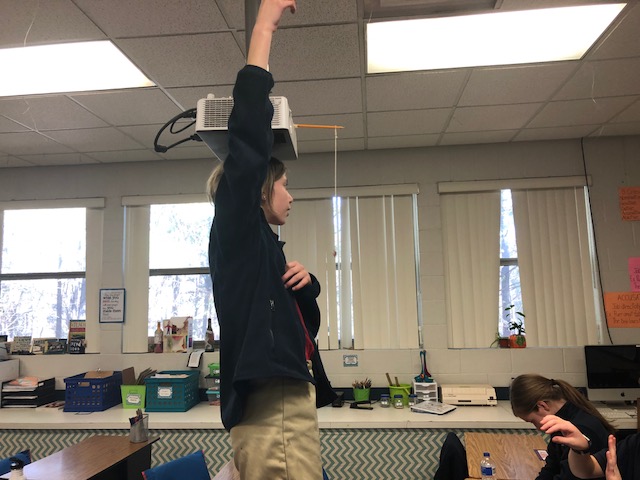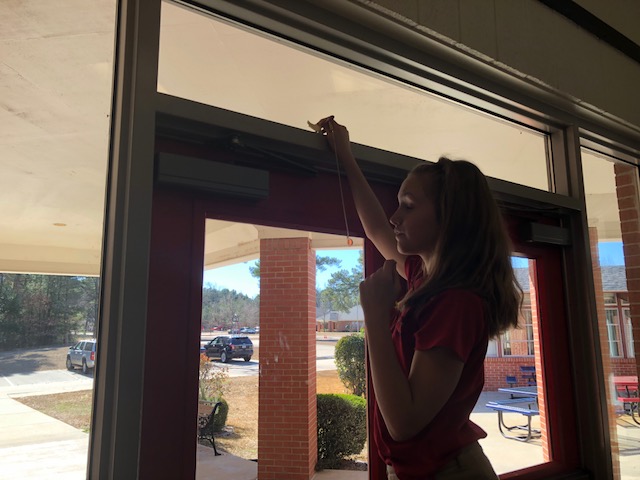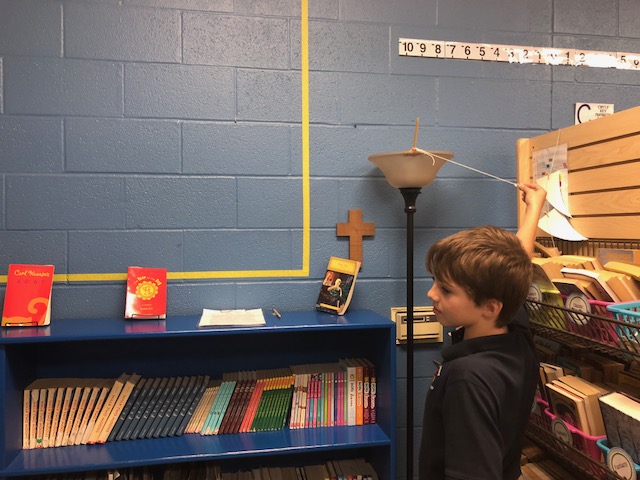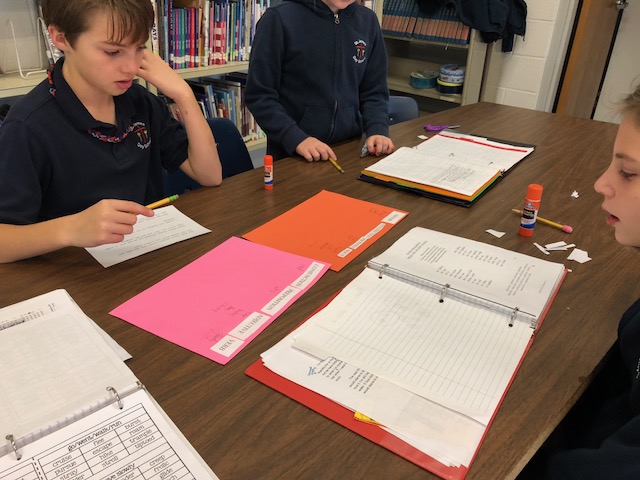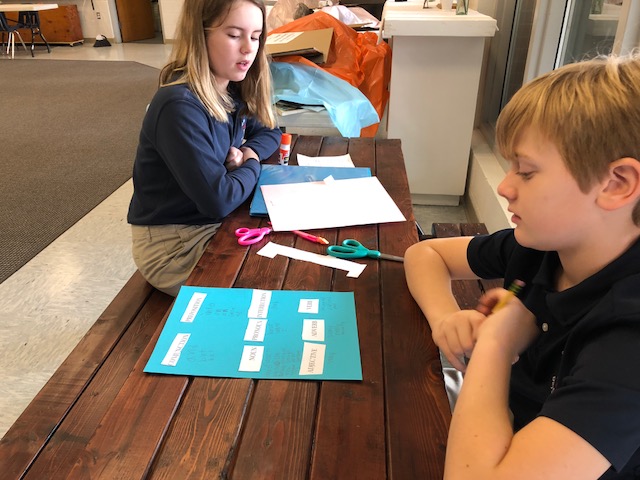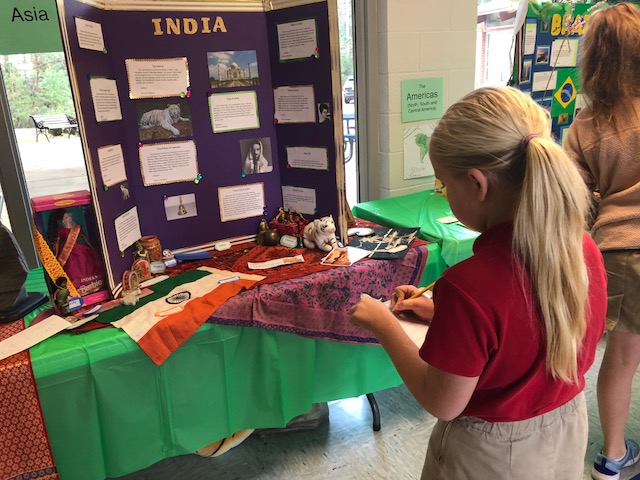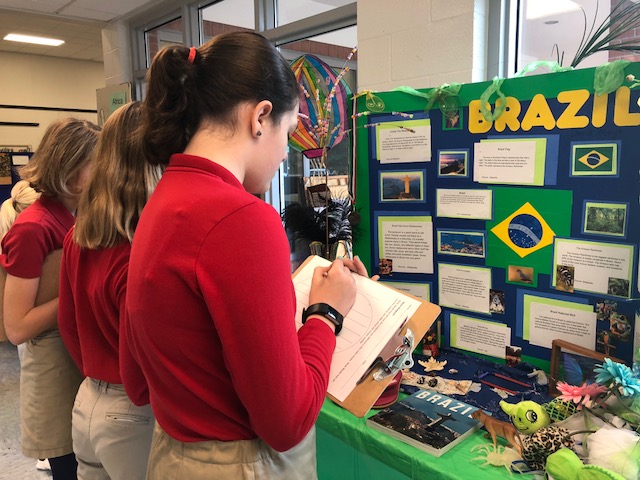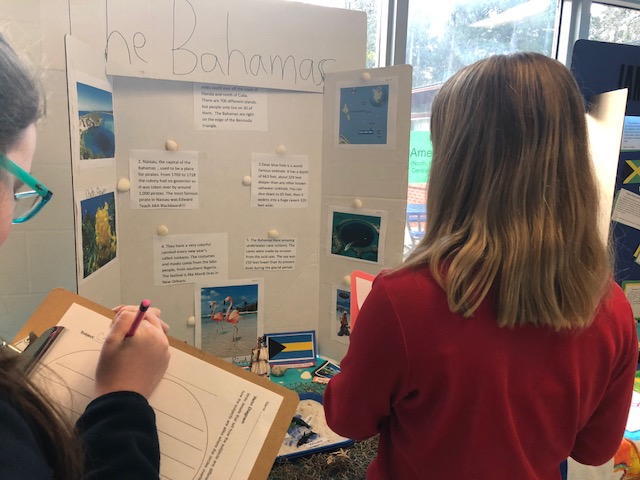The final component of our Variables unit in Science involves planes, and what 5th grader doesn't enjoy flying a plane he or she constructed? The students divided into lab groups and followed a set of instructions to build a plane out of popsicle sticks, straws, a propeller, and the "engine", a rubber band. Then they set up fishing line flight lines of 4 meters in length between two chairs. The goal was to learn how many "winds" of the rubber band it would take to fly the plane the entire length of the line. On the second day of investigation, the groups completed flight logs and conducted various controlled experiments, changing only one variable at a time-- winds, mass, or incline of the flight line. The final day of this investigation brought us self-designed experiments in which students became creative in changing their variables, such as stacking books under chairs, chairs on top of chairs, or removing parts of the plane to see if it would still fly. This is definitely a 5th grader's idea of a fun Science lab!


